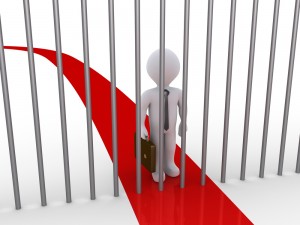Public Safety
 So your workers are safe. Great. But is everyone else too?
So your workers are safe. Great. But is everyone else too?
As a bit of an extreme example, an Essex developer was just sent to prison for 30 months after repeatedly putting the public, and his workers, at risk.
Local residents started calling to complain about bits of debris falling from upper levels of his site onto the street and buildings nearby. The inspectors visited and told him to stop all unsafe work immediately. He refused – several times – and ended up behind bars.
No Small Matter
The severity of his sentence might possibly have something to do with the fact that he also punched the inspector. Not a good idea. But the fact is, the HSE takes any possible safety threat from a construction site to the public and local residents Very seriously.
Every year, two or three children die in the UK after getting into construction sites. Take these steps to make sure it doesn’t happen on your watch!
You can split protecting the public into two areas; your site boundaries, and on-site potential hazards to the public.
Rock Solid Boundaries
It all comes down to good fencing. Wherever necessary, make sure it’s up. Usually this will be a mesh fence or boarding. In very populated areas the fence should be 2 metres high.
This starts, of course, at the site and project planning stage. And once up the fences need to be properly maintained as well.
To think about how extensive the boundaries need to be, ask yourself; how densely populated is the area and will the site attract children? And are there schools or large residential buildings nearby?
Crystal Clear Authorisation
Sometimes people need access to part of your site. In this case you can’t communicate and mark out clearly enough exactly where they’re allowed and where they aren’t. Everyone coming onto the site should know the site rules clearly, and be supervised properly too.
On-Site Hazards Putting the Public at Risk
The HSE considers there to be 11 main construction site areas which you should most watch out for. These 11 things cause more injury to the public than anything else;
- Things falling; mostly outside the boundary. Use toe-boards on scaffolding, netting and brick guards to keep stuff in. Consider if you need covered walkways too.
- Scaffolding; this includes any access equipment, watch out when putting them up or dismantling! People get hit when it’s done carelessly.
- Vehicles; any on-site or delivery vehicles of course have to take care. But also consider if you’re putting up barriers which force passersby onto the road where they can be hit by other cars. It’s still your responsibility!
- Materials; take care when stacking and storing. Store any materials (whether it’s manhole rings, sand and cement bags, pipes, anything) well-within the perimeter to be safe. Even better, store it in secure, locked away compounds, which is just clever for keeping out thieves too.
- Excavations; falling into trenches is a big cause of public-accidents. Make sure you use all kinds of barriers and covers to keep them safe. This includes trenches, stairwells, manholes, and any type of hole at all.
- Road works; goes without saying. Take all the above precautions.
- Too much noise; dust and vibration too. Keep it down at the edge of your perimeter.
- Possible slips and falls; Don’t leave things lying around. Andthis point starts at the design stage too. Any awkward steps sticking out onto the street? Get rid of them. Or prepare to be sued.
- Electricity; hardly worth mentioning it’s so obvious, but don’t have any possible electricity threat to the public. Or gas or any other energy source!
- Hazardous substances; keep it super safe and super secure.
- Machinery and equipment; just think to yourself; if I was a curious kid, could I get access to any of this machinery? Make sure it’s not possible. And of course make sure when in use there’s no possible threat to passersby.
When you follow these precautions you’ll be safe and sound. The Health and Safety inspectors will love you for it. And the public will too.
Key Takeaways:
- Don’t take protecting the public lightly, the HSE doesn’t!
- Focus on protecting your site boundaries, and maintaining them well.
- Focus on keeping all your on-site machinery, materials and conditions away from the public.
- Think; if a child broke onto the site, could this be a risk to them, and how can I prevent it?
Got any questions about your site security?
Do you think I’ve left anything out?
Ask away! Always happy to talk.

A chartered (fellow) safety and risk management practitioner with 20+ years of experience. David provides a healthy dose of how-to articles, advice and guidance to make compliance easier for construction professionals, Architects and the built environment. Get social with David on Twitter and Linkedin.



